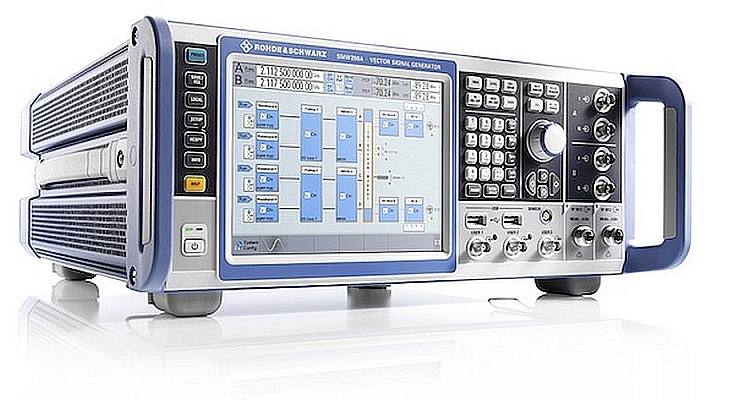- Rohde & Schwarz introduces a realtime control interface software option for simulated radar scenarios based on Pulse Descriptor Word (PDW) streaming.
- The radar scenario simulator streams the PDWs to the R&S SMW200A vector signal generator directly via LAN.
- Equipped with a new software option, the vector signal generator processes these signals to simulate agile and dense radar signal environments.
The R&S SMW200 acts as an agile signal source that generates pulse rates with required RF performance. It supports both classical pulsed signals and any I/Q modulated signals. This solution is especially well suited for extremely long-duration tests of radar receivers.
To cope with today’s demanding radar signal simulations, ultralong playtimes are needed in order to simulate realistic radar environments. Pulse sequences are calculated pulse by pulse and streamed as PDWs to an RF signal source. This avoids long calculation times and saves memory space in the signal generator.
The R&S SMW200A is able to generate pulse rates up to 1 Mpulse/s, as required for simulating dense signal scenarios and complex radar environments.
Users can connect their PDW-based radar scenario simulators directly to the vector signal generator via LAN. The R&S SMW-K503 software option allows integration of the R&S SMW200A as a signal source in radar simulation environments.
With an optional integrated second signal path, frequently needed additional interfering signals, such as adjacent communications signals, can be implemented in the single-box solution. The R&S SMW200A with two independent paths is a solution for testing DUTs with several channels or generating radar signals in two different frequency bands. Each path can receive PDWs independently via LAN and output them on the same frequency or different frequencies. Multiple channels can be coupled phase-coherent for simulating different angles of arrival (AoA).






